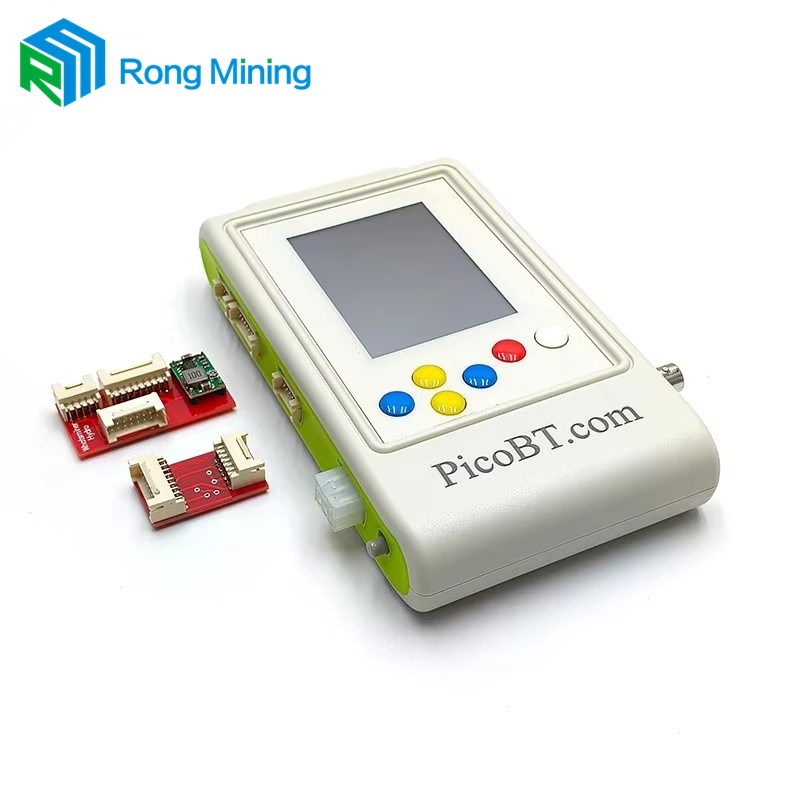Why choose Asic Miner Products for high-efficiency cryptocurrency mining?
2025-08-12
The cryptocurrency mining landscape has matured. Profitability now depends less on chance and more on engineering: efficient hardware, accurate power budgeting, and reliable supply chains. Asic Miner Products are purpose-built to deliver maximum hash rate per watt, simplify deployment at scale, and reduce total cost of ownership for professional miners. This article explains technical specifications, real-world benefits, purchasing considerations, and frequently asked questions — all written to help operators, integrators, and procurement teams make informed decisions.
Executive summary
Asic Miner Products focus on delivering:
-
Industry-leading hash efficiency (TH/s per kW).
-
Robust operation under continuous 24/7 loads.
-
Clear, manufacturer-provided performance and power specifications.
-
Modular design for streamlined maintenance and high uptime.
Whether you are expanding a warehouse farm, optimizing an existing rack, or evaluating replacements, Asic Miner Products aim to minimize operational risk while maximizing sustained throughput.
Typical product parameters — what to look for
Below is a compact reference table showing the kinds of specifications professional buyers should compare across Asic Miner Products:
| Parameter | Why it matters | Typical range (example) |
|---|---|---|
| Hash rate (TH/s) | Determines throughput and revenue potential | 50 — 200 TH/s |
| Power consumption (W) | Drives electricity cost — key input to profitability | 1200 — 3600 W |
| Efficiency (J/TH) | Shows energy cost per unit of hash — lower is better | 18 — 40 J/TH |
| Form factor | Influences rack density and ventilation | 1U / 2U / tower |
| Operating temperature range | Affects site cooling requirements and reliability | 0°C — 40°C |
| Network interface | For pool connectivity and remote management | Ethernet (1Gb/10Gb) |
| Noise level (dB) | Important for on-site worker safety and placement | 55 — 85 dB |
| Warranty & support | Reduces long-term risk | 6–24 months typical |
Note: The ranges above reflect common industry variations. Always verify the exact specification sheet for each model before purchase.
Performance comparison table
This sample illustrates how two miner models compare on an operational cost basis (assumptions: electricity = $0.05/kWh, continuous operation):
| Model | Hash (TH/s) | Power (W) | Efficiency (J/TH) | Daily kWh | Daily energy cost |
|---|---|---|---|---|---|
| Model A100 | 120 | 2600 | 21.67 | 62.4 | $3.12 |
| Model S60 | 65 | 1200 | 18.46 | 28.8 | $1.44 |
Use this type of table to estimate per-device operating cost and to scale those numbers to entire farms.
Environmental and regulatory notes
-
Noise and heat emissions may be regulated in commercial zones. Verify local ordinances.
-
Power draw and electrical installations should comply with local wiring regulations and safety codes.
-
Consider energy source: pairing miners with renewable or captive low-cost power improves sustainability and margins.
Asic Miner Products FAQ
Asic Miner Products FAQ: What is the most important spec to compare across miners? — Efficiency (J/TH) is the key metric because it directly affects ongoing electricity costs, which typically dominate total operating expenses.
Asic Miner Products FAQ: How do I size power infrastructure for a miner rack? — Add the full-load wattage of each miner, include power supply overhead (10–20%), and verify breaker/PDU ratings; engage an electrician to confirm distribution and redundancy.
Asic Miner Products FAQ: How long should I expect a miner to remain competitive? — Typical useful commercial life ranges from 12 to 36 months before newer generations reduce relative profitability; plan for resale, recycling, or redeployment strategies.
(Additional common Q&A examples you can place on product pages)
Asic Miner Products FAQ: Can firmware updates improve performance? — Firmware updates can improve stability, mining protocol compatibility, and occasionally efficiency; only apply updates from verified vendor sources and test on a small number of units first.
Asic Miner Products FAQ: What cooling approaches work best? — Maintain sealed airflow channels per rack row, optimize intake/exhaust configuration, and monitor delta-T across the rack. Air-based cooling is common; immersion cooling yields higher density but requires specialized infrastructure.
Case studies and ROI scenarios
-
Small-scale operator: 50 units of Model S60 deployed in a commercial colocation space, focusing on efficiency and low noise for mixed-use facilities.
-
Mid-tier farm: 1,000 units of Model A100 in a repurposed warehouse near cheap grid power with industrial-grade cooling and automated monitoring.
Each scenario should include expected break-even month under conservative revenue assumptions — these models help procurement teams present to finance.
Conclusion
Asic Miner Products target professional miners who need predictable performance, clear efficiency metrics, and robust service. Evaluating devices with a disciplined TCO model and the tables shown above will help you prioritize purchases that deliver sustainable returns.
For procurement, technical clarifications, or to request up-to-date product catalogs, please contact Shenzhen Xinjinyi Technology Co., Ltd.



